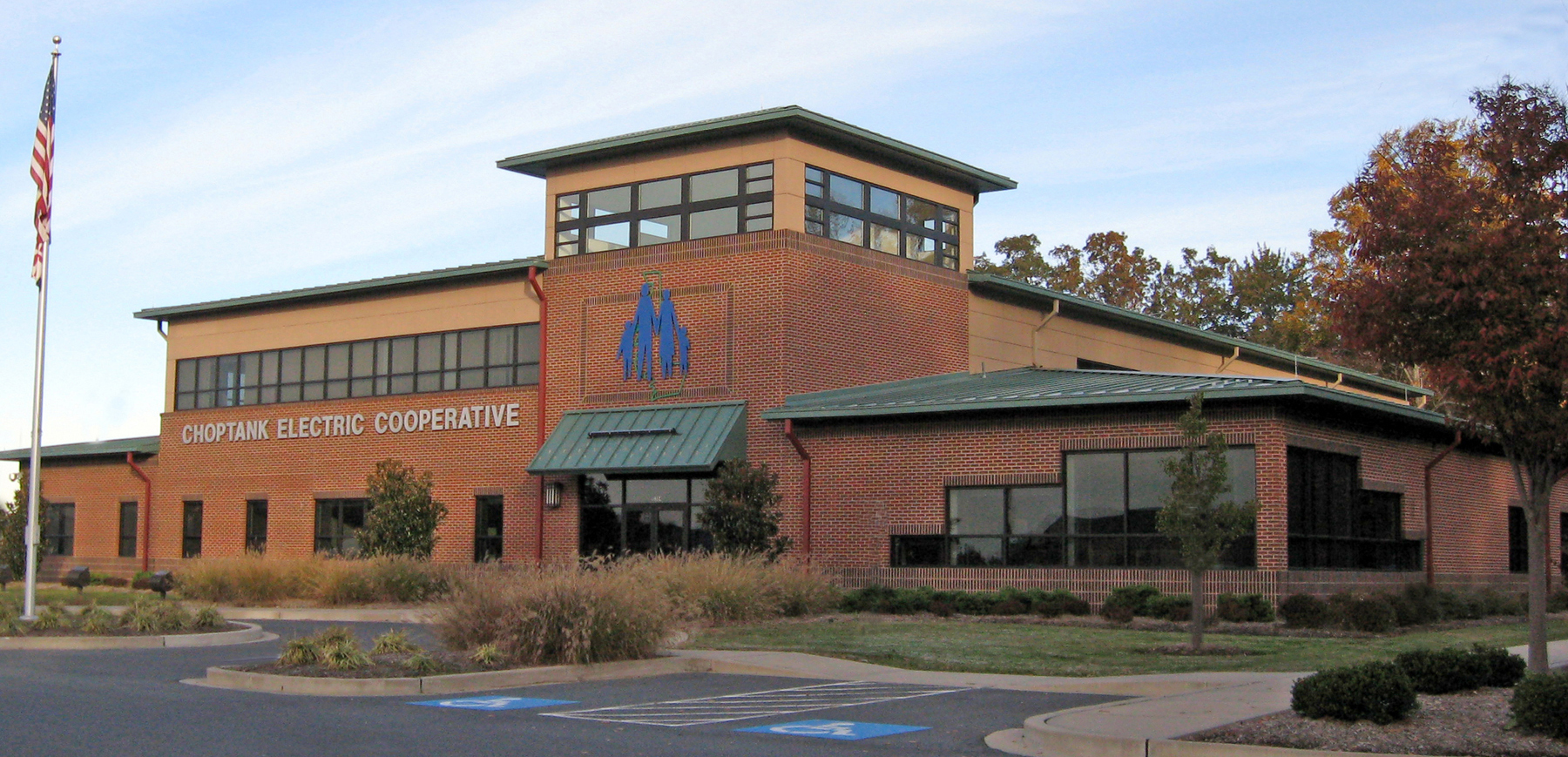When you’re a member of Choptank Electric Cooperative you’re also one of the owners.
The unique organization of electric cooperatives such as Choptank puts power in the hands of the people it serves—and that means a host of benefits not often found among investor-owned companies.
Prior to 1935, barely ten percent of people living in the nation’s countryside had electricity in their homes. The companies providing electricity showed little interest in serving rural areas where low population density meant greater distances between service points and thus higher costs and lower revenues.
The formation of the Rural Electrification Administration (REA) in 1935 changed that. The REA (now the Rural Utilities Service) offered financing and technical expertise to farmers and small-town residents who banded together to form cooperatives as a way to bring electricity to sparsely settled areas of the country.
Choptank Electric Cooperative, with headquarters in Denton, has provided power to its members since 1938. The co-op serves over 52,200 customers in all nine counties of Maryland’s Eastern Shore. 
Committed to maintaining its local presence in the communities it serves, Choptank Electric has full-service offices in Denton, Cambridge, Salisbury and Berlin with operations facilities in St. Michaels and Chestertown.
The cooperative exists to provide energy and other related services that improve the quality of life of its member-owners. It is committed to operational excellence, reliable service, environmental stewardship, integrity and cost-effective management, as well as maintaining a well-trained work force, dedicated to safety and service excellence.
As a Touchstone Energy Cooperative, Choptank Electric Cooperative is committed to the core values of integrity, accountability, innovation and commitment to the community.
Electric cooperatives are as vital to the needs of consumers in the 21st century as they were in 1935. The basic structure of cooperatives makes them unique in the industry and essential parts of the communities they serve. Electric co-ops, like cooperatives everywhere, are distinguished by a set of seven basic principles: Voluntary and open membership; Democratic member control; Nonprofit status; Autonomy and independence; Education, training and information; Cooperation among cooperatives; and Concern for community.
Chances are you’ve been doing business with cooperatives for a very long time. If you have ever used the financial services of a credit union, eaten a Sunkist orange, bought a hammer at Ace Hardware, munched on pastries from Dunkin’ Donuts, read a news story from the Associated Press, had some Cabot cheese with your crackers or spread a little Welch’s Grape Jelly on your toast … you’ve done business with a cooperative.
Today, more than 120 million Americans are members of approximately 48,000 cooperatives.
Over 900 electric cooperatives serve 42 million people in the United States. America’s electric cooperatives own 43 percent of the electrical infrastructure in the U.S. while serving 12 percent of the population.
Choptank is a member of the Virginia, Maryland and Delaware Association of Electric Cooperatives along with 14 other member-owned electric co-ops. Association member cooperatives serve approximately 1.44 million people in the three states.
Choptank Electric is an owner of Old Dominion Electric Cooperative (ODEC), the generation and transmission co-op which procures power for Choptank and 10 other electric cooperatives in Virginia and Delaware. Like Choptank, ODEC is a member-owned, not for profit organization. Old Dominion owns a portion of the North Anna Nuclear Power Station and half of the coal-fired Clover Power Station, both in Virginia. In addition, ODEC has constructed three natural gas-fired peaking plants, including the Rock Springs Generating Station in Cecil County, as well as hydropower, landfill gas and wind-powered energy agreements.
The National Rural Electric Cooperative Association (NRECA) represents the national interests of the cooperative electric utilities and the consumers they serve. The organization has over 1,000 member cooperatives that serve 47 states. Choptank is one of 850 distribution members of the NRECA. Together they distribute electricity to more than 30 million people.
Electric cooperatives and other members of the co-op family have taken center stage globally in 2012, which is the International Year of Cooperatives.
“We’re surrounded by a diverse mix of cooperatives,” said Mike Wheatley, President and CEO of Choptank Electric. “No matter what kind of co-op you belong to, two things are clear: we put people first, and we are innovators. By getting neighbors and communities to work together, co-op members build a better world.
“Cooperatives are a global network of independent local businesses owned by those they serve. We share a common set of business principles and values like self-help and democracy,” explained Mr. Wheatley. “A co-op exists to meet the needs of its members.”
According to the Washington, D.C.-based National Cooperative Business Association (NCBA), more than 29,200 cooperatives nationally employ 2 million Americans. One in every four Americans is a co-op member, but the scope of the cooperative network doesn’t stop at the border. More than 1 billion co-op members exist worldwide, and co-ops generate 100 million jobs globally.
Cooperative businesses have been around since 1844, when the Rochdale Society of Equitable Pioneers in England was established. The Rochdale Pioneers was a group of 28 weavers and other artisans which was the first consumer cooperative to pay a patronage dividend. This means that rather than rewarding outside investors with its profits, a co-op returns surplus revenue to its members in proportion to how much they use the co-op. The cooperative movement throughout the world was born with that first Rochdale cooperative. And cooperatives today still operate on the same principles.
For more information about co-ops, visit their website. www.choptankelectric.coop



Write a Letter to the Editor on this Article
We encourage readers to offer their point of view on this article by submitting the following form. Editing is sometimes necessary and is done at the discretion of the editorial staff.